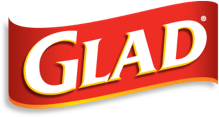Shop Smarter
to #ChangeTheOutcome on Food WasteThe Sustainable Shopper Checklist
Sustainability continues to be top of mind for Australians, with almost three-quarters of consumers concerned about the environment and global warming, according to our recent study1. The task of combating climate change can feel overwhelming. Still, when it comes to living a greener lifestyle, no act is too small, and something as simple as changing your shopping habits can have a significant impact on the planet.
Within Australia, $3,800 worth of groceries end up in the bin each year, with 7.3 million tonnes of food being lost or wasted, which is enough to fill 13,000 Olympic swimming pools!2
Reducing the amount of food, we waste at home all starts with how we shop. Whether you’re rushed for time or aren’t able to plan your weekly shop, we have some simple, sustainable choices you can make that’ll help the planet by reducing food waste and save you money.
Step 1: Be prepared to sidestep the special offers
While special offers are great in helping to manage our budget, be mindful of when they’re encouraging you to purchase more than you need. It can be easy to fill the trolley when we’re surrounded by deals and shopping on an empty stomach. Remind yourself of the quantities you need to avoid wasting food items down the line.
Step 2: Prepare a sustainable shopping list
When you prepare to head out to the shops, it is important to make a list of everything you need to ensure you only purchase exactly what you need. You can prepare a sustainable shopping list by planning your meals, checking what you have in your cupboards/fridge that you can still use, and buying ingredients that you need. It is important that you make sure you are heading into the shop with a plan and ultimately reducing the amount of food wasted in your household.
Step 3: Packaging matters
Looking at packaging and figuring out what should and shouldn’t be recycled can be confusing. When manoeuvring through the grocery aisles, take a few extra seconds to check the packaging of the products you’re picking up. When you’re selecting your products, be mindful in checking that they have a recyclable stamp or the Australian Recycling Label (ARL) as found on the Glad to be Green® product packaging, so you know how you can recycle your packaging correctly. Initiatives like the REDcycle Program3 are an easy way to recycle soft plastics, including Glad to be Green® Wrap and Reseal Bags and can be dropped off at your local Coles or Woolworths supermarket.
You can also look out for the ‘certified compostable logo’, like on the Glad to be Green® Compostable Bake Paper. Products that have the ‘AS5810 compostable logo’ means that they can be home composted after use and products with the ‘AS4736 compostable logo’ can be composted with your local council program – both of which help to reduce the amount of waste headed for landfill.
Step 4: Experiment with your ingredients
Embrace the edgy fruit and veggies at the grocery store that often end up in landfill as edible food scraps – CSIRO estimates that $1.7 billion worth of fruit and vegetables are wasted as they don’t meet strict cosmetic standards.4 This goes for meat as well; ask your local butcher about the less popular cuts – they’re often more cost-effective, and it re-diverts them from going to food waste.
Step 5: Be conscious of how you store your bulk-buy items
Many of us tend to buy in bulk to help with meal planning or because we think it’s a cheaper option for our wallets. Buying non-perishable items such a dried pasta; is an excellent example of effective meal prepping but we should always keep in mind we are not over purchasing.
The key thing to keep in mind is making sure the items we’re bulk buying are being stored correctly so that they last for longer. If you have extra or any leftovers from your meal planning you can freeze them in Glad to be Green® Reseal Bags to keep them fresh and protected.
Step 6: The difference between ‘best before’ and ‘use by’
Use by dates indicate when a product may no longer be safe to eat, whereas best before dates indicate quality rather than safety5. Food labels are your friend and key in reducing food waste. Make sure you’re buying food in quantities that you’ll be able to consume within your planned time frame.
Above all, remember it’s those simple everyday changes that can have a significant impact. Over time, you will find that the choices you can make positively affect your wallet and the environment.
1 GLAD® Research Study (May 2021), “Understanding consumer behaviour towards food waste and environmental impact in the Australian market”, conducted by Project Purus: Antenna Research
2 https://www.foodbank.org.au/food-waste-facts-in-australia/?state=nsw-act
3 https://www.redcycle.net.au
4 https://www.abc.net.au/news/rural/2017-07-11/ugly-vege-gets-a-fair-go-as-food-scientists-strive-to-cut-waste/8697192
5 https://www.highspeedtraining.co.uk/hub/use-by-best-before-dates-difference/

